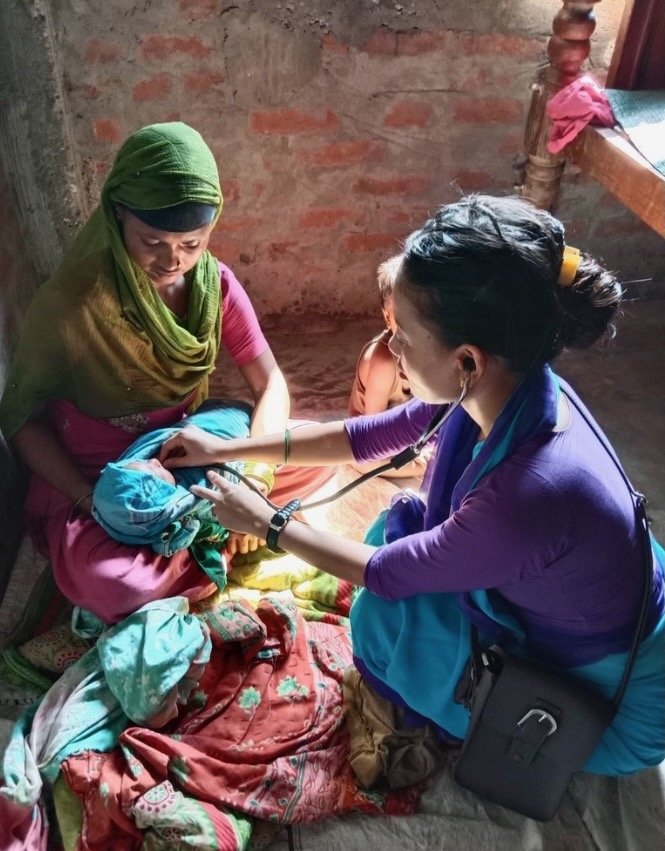Sarlahi: A Story of hope and change
By Amrendra Ray and Naresh Newar
In the Sarlahi District of the Madhesh Province, one of Nepal’s seven provinces, One Heart Worldwide (OHW) initiated its maternal and neonatal health program (MNH) in 2021. Before we introduced our program, even though birthing centers were in existence, there was a severe shortage of skilled healthcare professionals.
OUR BEGINNINGS IN SARLAHI
Sarlahi is the first district in the Madhesh Province where OHW started its interventions to support local government efforts in strengthening the MNH system. The first step was to identify the gaps in service on the ground. Our assessment showed that there was low priority and poor understanding of the value of the minimum health standards (MSS) and implementing quality improvement processes. Many health facilities were in poor condition, most marked with a concerning ‘red label,’ indicating poor performance in service quality, maintenance, management, and care services.
Conducting needs assessments in rural municipality wards with high birth deliveries, OHW identified three critical areas that required attention. The first was renovations, followed by the capacity building of the health facility management team, improving clinical skills, and participation in Skilled Birth Attendant (SBA) training. Additionally, OHW identified equipment shortages and worked with the local governments for improvement in this area.
Access to healthcare providers was poor, with a marked lack of awareness among service recipients about how to access these providers. OHW mobilized the existing government infrastructure and networks to provide life-saving skills training to Female Community Health Volunteers (FCHVs) and other health professionals. This initiative raised awareness about the services these individuals offered as care providers.
Simultaneously, OHW undertook extensive renovation work and equipment provision to upgrade healthcare facilities. We also advocated for the recruitment of more service providers, particularly nurses, at local health facilities. These combined efforts considerably improved the quality of healthcare services, ensuring the smooth functioning of these facilities.
BOOSTING PARTNERSHIP LEADING TO EFFECTIVE GOVERNANCE
The maternal and neonatal health (MNH) program in the municipalities of Sarlahi has significantly improved under OHW's guidance. Municipalities started offering free ambulance services, organizing free rural ultrasound services, providing free transport for antenatal care (ANC) check-ups, incentivizing institutional deliveries, and allocating budgets for facility upgrades. OHW played a vital role in creating awareness and instilling a sense of ownership among local governments, which led to these positive changes.
A NEW CULTURE OF INSTITUTIONAL CARE IN THE COMMUNITY
Community attitudes toward safe motherhood also saw a shift. The lack of awareness about government-provided services and allowances for institutional deliveries among communities was addressed by OHW. This resulted in an increase in ANC check-ups and a greater understanding of safe motherhood practices in local communities.
STRENGTHENING the HEALTH SYSTEM
System strengthening is another crucial aspect of OHW's program. This includes improvements in reporting mechanisms, budget allocation, and the overall management of rural health facilities. Management committees, consisting of ward chairs, community leaders, and health staff, became more involved in the planning and better management of health facilities. Budget planning and allocation improved, leading to effective utilization of resources, especially in the MNH sector. Reporting mechanisms and referral processes saw substantial enhancements, ensuring timely and efficient communication and improvements in the overall system.
Overall, the Birthing Centers are more systematic now. Before OHW intervention, Birthing Centers were poorly planned and managed. The improved system now helps nurses to do their jobs better and more efficiently. They have a better working space, files are in order, and medicines are properly stored. The service spaces in the birthing centers are more hygienic, and the equipment is better maintained and in place.
ENHANCED SKILLS AND KNOWLEDGE AMONG NURSES
The program also aimed to enhance the capacity of nurses through skill and knowledge assessments. Training for nurses was organized to fill the knowledge gaps utilizing OHW’s Simulation-Based Mentorship Program (SBMP), involving six monthly sessions simulating real-life scenarios. These efforts resulted in improved clinical work by the nurses, enhancing their performance in managing maternity and neonatal cases, IV usage, complication management, and the overall management of health facilities.
CHANGING BEHAVIORS THROUGH COMMUNITY WORKERS
OHW identified a lack of knowledge and awareness among mothers, pregnant women, and their caretakers about identifying danger signs during pregnancy. They initiated capacity-building workshops for Female Community Health Volunteers (FCHVs) and community health workers to educate them about life-saving skills and identifying potential risks during pregnancy. These efforts motivated FCHVs, empowering them to communicate effectively with mothers regarding government services, birth preparedness, antenatal care, and postnatal care.
The Birthing Preparedness Plan was introduced, which included providing Jiwan Suraksha cards containing essential information related to pregnancy, awareness around danger signs, and preventive measures to avoid pregnancy-related risks. Regular counseling by nurses trained through OHW support became a crucial component of the plan.
OHW provided ultrasound machines and training to nurses to enhance the government's free ultrasound services, facilitating free mobile camps in various municipality wards. This eliminated the need for pregnant women to travel long distances and spend money on ultrasound services.
FOSTERING GOVERNMENT INVESTMENT
To foster greater accountability and involvement of local governments in MNH activities, OHW initiated cost-sharing partnerships. This new approach aimed to encourage local governments to invest in facility upgrades, nurse training, and health facility management. OHW engaged government stakeholders, shared budget and planning ideas, and actively promoted this partnership model. These collaborations enhanced the culture of cost-sharing at the institutional level and enabled local governments to allocate funds to health facilities and invest in human resources for MNH, such as nurses.
OHW's efforts extended to transforming the infrastructure and facilities at Birthing Centers, which previously faced numerous challenges. Many centers had poor building structures, unsanitary conditions, and insufficient life-saving equipment. Nurses had inadequate working and living spaces and often lacked proper fencing and privacy. OHW's program brought significant changes to these facilities.
EVIDENCES OF CHANGE: Before and after
A lot has changed since OHW arrived in Sarlahi. The before and after scenarios are evidence of that. The building structures were poor, the interiors were not clean, and hygiene conditions were subpar. There was a lack of skilled staff, and the surroundings were also not patient-friendly. The management was inefficient and disorganized, and there was a shortage of good life-saving equipment.
Many Birthing Centers were challenging to enter, causing discomfort for mothers and pregnant women seeking care. Nurses had insufficient space to work, and some Birthing Centers had flooded compounds or were overgrown with grass and marsh. They had no security, and cattle often grazed in the compounds. Some Birthing Centers were attached to other government offices, which led to a lack of privacy and safety concerns.
However, through the intervention of OHW, nurses now have safe working spaces, and Birthing Centers boast clean, hygienic, and spacious rooms that offer privacy. The centers have separate buildings dedicated exclusively to MNH care. This transformation motivates more women and their families to seek quality care and services. Additionally, better security measures and properly fenced areas ensure the safety and privacy of all involved.
We can see these improvements in various birthing centers:
Chandranagar Health Facility:
At the Chandranagar Health Facility, vital equipment was previously stored away, largely underutilized, or left unused. The delivery room was inadequately prepared, lacking essential equipment for safe childbirth and antenatal care (ANC) checkups. There was no information on display. Typically, only a single staff nurse was present, and management was lacking. The medical cabinets were disorganized, life-saving medicines were not stored correctly, and the cold storage facilities were lacking. The maternity beds were in poor condition. Medicine was found in cartons and haphazardly placed outside like discarded items.
However, following extensive training and increased awareness efforts, the management of the health facility has been transformed. OHW's intervention prompted the municipality to acknowledge the poor conditions at the Chandranagar health facility, leading to a remarkable transformation.
Sohadwa Birthing Center, Basbariya Municipality:
The health facility used a single room for multiple purposes, from ANC checkups to delivery and counseling. The infrastructure was lacking, and OHW's intervention resulted in dedicated spaces for ANC, PNC, and deliveries. The Birthing Center now offers an enhanced referral system and has even established an emergency unit, leading to a transformation that earned it recognition as a "zero home delivery ward" and model Birthing Center.
Laxmipur Birthing Center Before OHW intervention
Laxmipur Birthing Center After OHW Intervention
Laxmipur Birthing Center:
The conditions were deplorable during our initial visit to the Laxmipur Birthing Center. The compound was frequently flooded, signifying a high level of negligence. The environment was unsuitable for pregnant women, new mothers, and babies, posing significant health risks.
The compound was occupied by cows, hens, roosters, and ducks, and visitors had to walk through water and mud to enter the health facility. Situated in a bustling marketplace, the toilet of the health facility was frequently used by the general public, leading to an unhygienic and unsanitary condition of the toilets.
The ward office was attached to the health facility and attracted a constant crowd seeking general administrative services and documentation, further contributing to the chaotic environment. The presence of garbage was noticeable, and there was no secure gate to protect the Birthing Center. The nurses worked in a state of constant stress, feeling insecure, especially during night shifts. The facility was also visited by young men seeking internet access.
However, a transformative change occurred following the establishment of an agreement between OHW, the municipality, and Save the Children. OHW's intervention, combined with the municipality's commitment to a 50% cost-sharing partnership, resulted in the construction of a new Birthing Center. Save the Children provided additional support, including the construction of a boundary wall, an iron gate, and water management. This collaboration led to a clean and secure environment at the Birthing Center, instilling a sense of safety among mothers, pregnant women, and nurses.







